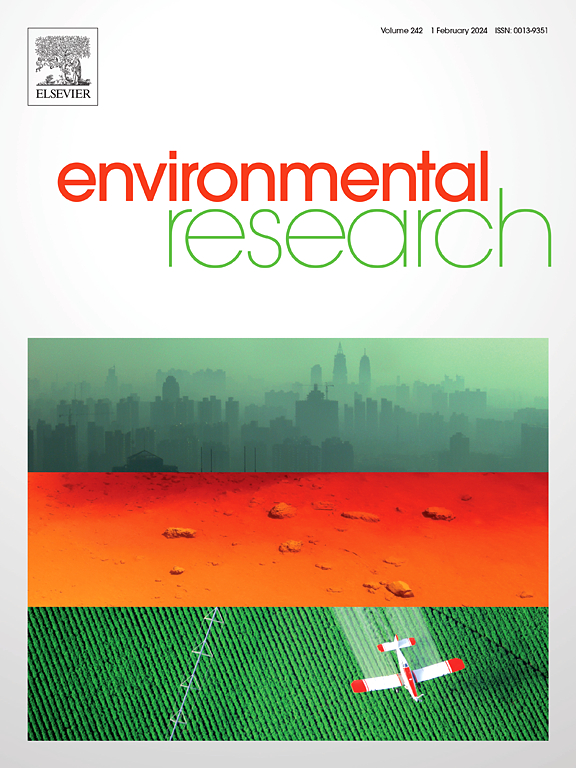In situ analysis of oxygen vacancy modified TiO2-Ov/g-C3N4 S-scheme heterojunction by 2D-PCIS spectroscopy for efficient synergistic photocatalytic degradation of naphthalene in water
IF 7.7
2区 环境科学与生态学
Q1 ENVIRONMENTAL SCIENCES
引用次数: 0
Abstract
The S-scheme heterojunction notably improves the separation and transport of photogenerated carriers due to its distinctive charge transfer mechanism and structural advantages. In this study, TiO2 was synthesized in situ on g-C3N4 using a hydrothermal method, followed by calcination to introduce oxygen vacancies and construct the S-scheme heterojunction photocatalyst (TCN). Experimental results showed that the optimal performance was achieved with a TiO2-Ov content of 30%, where the TCN-30 catalyst degraded over 82.44% of naphthalene (Nap) within 180 minutes. Electron spin resonance (ESR) analysis confirmed the presence of many oxygen vacancy defects in TCN-30, as well as the generation of reactive oxygen species (ROS) during the experimental process, which played a key role in enhancing Nap degradation. Subsequently, a series of photoelectrochemical tests were conducted to demonstrate the excellent synergistic effect between oxygen vacancies and the strategy of constructing heterojunctions. Additionally, density functional theory (DFT) calculations helped clarify the working mechanism of the TCN S-scheme heterojunction and revealed its structure–activity relationship in photocatalytic applications. This study offers a theoretical foundation and technical guidance for the future design of photocatalysts tailored to specific functional needs.

氧空位修饰TiO2-Ov/g- c3n4s -scheme异质结在水中协同光催化降解萘的2D-PCIS原位分析
s型异质结由于其独特的电荷转移机制和结构优势,显著改善了光生载流子的分离和输运。本研究采用水热法在g-C3N4上原位合成TiO2,然后煅烧引入氧空位,构建s型异质结光催化剂(TCN)。实验结果表明,TiO2-Ov含量为30%时,TCN-30催化剂在180 min内对萘(Nap)的降解率达到82.44%,达到最佳性能。电子自旋共振(ESR)分析证实了TCN-30中存在许多氧空位缺陷,并且在实验过程中产生活性氧(ROS),这对增强Nap降解起着关键作用。随后,进行了一系列的光电化学测试,以证明氧空位与异质结构建策略之间具有良好的协同效应。此外,密度泛函理论(DFT)计算有助于阐明TCN S-scheme异质结的工作机制,揭示其在光催化应用中的构效关系。该研究为未来设计适合特定功能需求的光催化剂提供了理论基础和技术指导。
本文章由计算机程序翻译,如有差异,请以英文原文为准。
求助全文
约1分钟内获得全文
求助全文
来源期刊

Environmental Research
环境科学-公共卫生、环境卫生与职业卫生
CiteScore
12.60
自引率
8.40%
发文量
2480
审稿时长
4.7 months
期刊介绍:
The Environmental Research journal presents a broad range of interdisciplinary research, focused on addressing worldwide environmental concerns and featuring innovative findings. Our publication strives to explore relevant anthropogenic issues across various environmental sectors, showcasing practical applications in real-life settings.
 求助内容:
求助内容: 应助结果提醒方式:
应助结果提醒方式:


